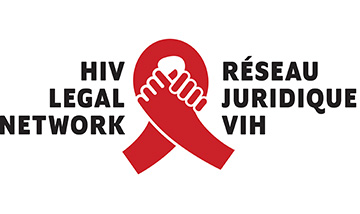The following statement is issued jointly by the Canadian HIV/AIDS Legal Network (“Legal Network”), the Coalition des organismes communautaires québécois de lutte contre le sida (COCQ-SIDA), and the HIV & AIDS Legal Clinic Ontario (HALCO). Comments can be attributed to Richard Elliott, Executive Director, Canadian HIV/AIDS Legal Network.
TORONTO, February 12, 2020 — Today, the Canadian HIV/AIDS Legal Network, COCQ-SIDA and HALCO are jointly intervening in “R v NG,” a precedent-setting case before the Court of Appeal for Ontario.
In this case, a young man living with HIV was convicted in 2017 of aggravated sexual assault for not disclosing his HIV-positive status before sexual intercourse — despite using a condom in every instance. There is no allegation that HIV was transmitted and no evidence of any incorrect condom use.
Evidence before the court indicated that when used correctly, condoms are 100% effective in preventing HIV transmission because the virus cannot pass through them. Despite this, the trial judge ruled that condom use alone was insufficient; therefore the non-disclosure of his HIV status was an aggravated sexual assault, one of Canada’s most serious offences.
In our view, it is wrong to insist that both a low viral load (i.e. treatment that suppresses HIV in the body) and condom use are required in order to negate a “realistic possibility of HIV transmission,” which is the legal standard for a duty to disclose.
Today we are arguing in court that correct condom use is, and should be, sufficient to prevent criminal prosecution.
The consensus of scientific experts across Canada and around the world is that “correct use of a condom during sex means HIV transmission is not possible.” (See both the original consensus statement of Canadian scientists and the more recent international Expert Consensus Statement from scientists and leading international HIV scientific organizations.) Continuing to criminalize people living with HIV who use condoms is discriminatory and an overly broad application of the criminal law that is harmful and bad for public health.
The trial judge’s original decision was based on the 2012 Supreme Court of Canada decision in R. v. Mabior. That case has often been interpreted as saying that the law always requires both a low viral load and condom use in order to negate a realistic possibility of HIV transmission. However, the Supreme Court was not so categorical in its decision, and recognized that the law could adapt in future.
Since that decision eight years ago, there have been cases in which, based on the scientific evidence before them, courts have concluded that a low viral load on its own negates a realistic possibility of transmission. This recognizes the global consensus that a person with a suppressed viral load cannot sexually transmit HIV — in other words, “Undetectable = Untransmittable”. It’s time for the law to catch up with the science and recognize that condoms can also negate a realistic possibility of transmission.
The injustice of criminalizing people living with HIV who correctly use condoms is compounded by the severe consequences of a conviction for aggravated sexual assault, including years in prison, mandatory lifetime designation as a sex offender and, in some cases, deportation. These are grossly disproportionate penalties for a sexual encounter that is otherwise consensual, and in which a person has taken a highly effective precaution that means either zero risk or at most a negligible risk of HIV transmission.
As interveners in this hearing, the Legal Network, COCQ-SIDA and HALCO will advocate for a ruling that is based on science, respects human rights and is good public policy.
-30-
For more information:
Watch our video explaining the criminalization of people living with HIV in Canada.
Emma Riach
Communications and Campaigns Officer
Canadian HIV/AIDS Legal Network
416-595-1666 x 236
437-985-6544
